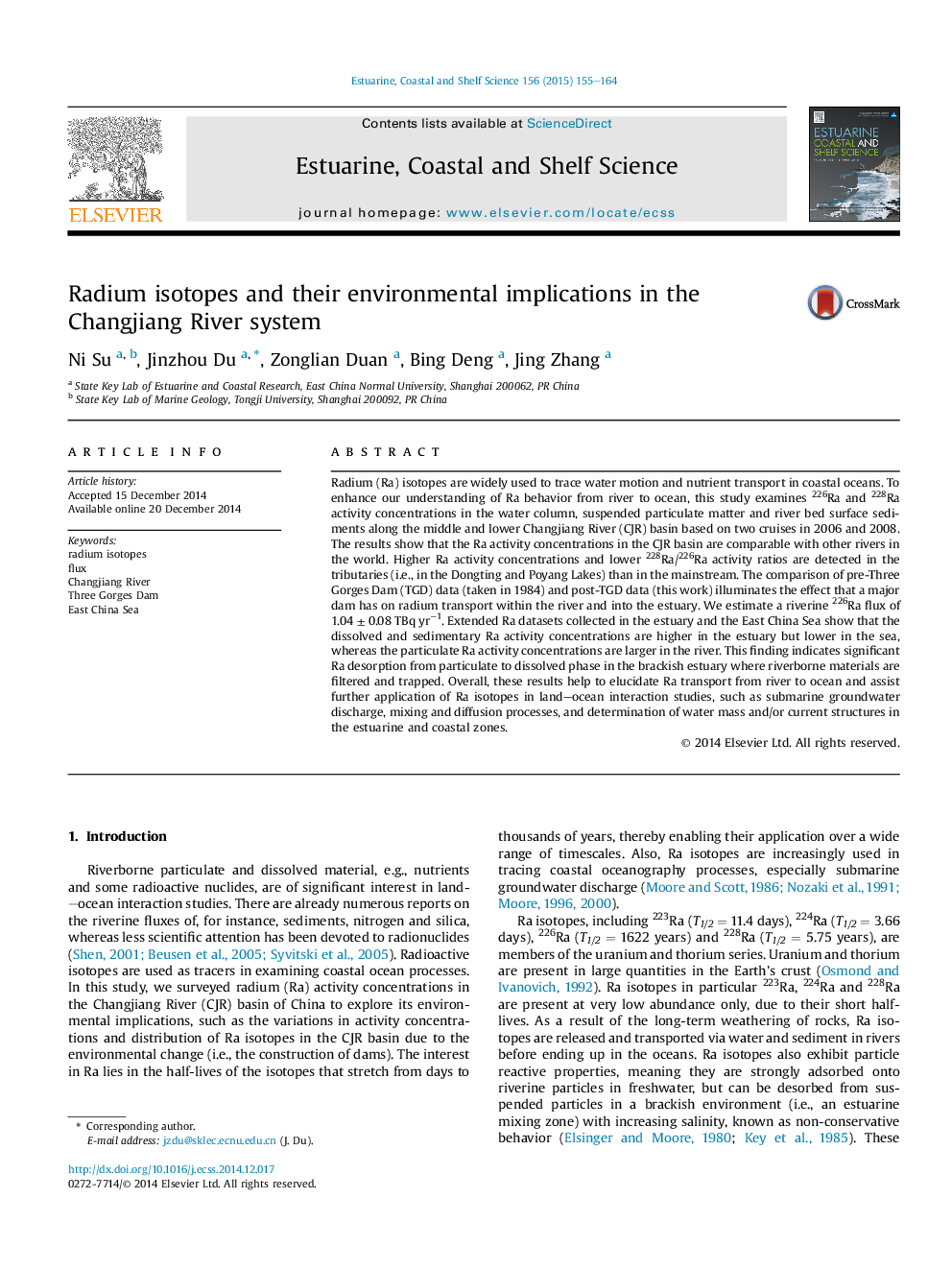| Article ID | Journal | Published Year | Pages | File Type |
|---|---|---|---|---|
| 4539577 | Estuarine, Coastal and Shelf Science | 2015 | 10 Pages |
•Radium activity concentrations are surveyed in water and sediment in the Changjiang River.•Riverine 226Ra flux reaching the estuary is estimated.•Ra behavior and its environmental implications are discussed.•Ra activity concentrations are interpreted in terms of land–ocean interaction.
Radium (Ra) isotopes are widely used to trace water motion and nutrient transport in coastal oceans. To enhance our understanding of Ra behavior from river to ocean, this study examines 226Ra and 228Ra activity concentrations in the water column, suspended particulate matter and river bed surface sediments along the middle and lower Changjiang River (CJR) basin based on two cruises in 2006 and 2008. The results show that the Ra activity concentrations in the CJR basin are comparable with other rivers in the world. Higher Ra activity concentrations and lower 228Ra/226Ra activity ratios are detected in the tributaries (i.e., in the Dongting and Poyang Lakes) than in the mainstream. The comparison of pre-Three Gorges Dam (TGD) data (taken in 1984) and post-TGD data (this work) illuminates the effect that a major dam has on radium transport within the river and into the estuary. We estimate a riverine 226Ra flux of 1.04 ± 0.08 TBq yr−1. Extended Ra datasets collected in the estuary and the East China Sea show that the dissolved and sedimentary Ra activity concentrations are higher in the estuary but lower in the sea, whereas the particulate Ra activity concentrations are larger in the river. This finding indicates significant Ra desorption from particulate to dissolved phase in the brackish estuary where riverborne materials are filtered and trapped. Overall, these results help to elucidate Ra transport from river to ocean and assist further application of Ra isotopes in land–ocean interaction studies, such as submarine groundwater discharge, mixing and diffusion processes, and determination of water mass and/or current structures in the estuarine and coastal zones.
